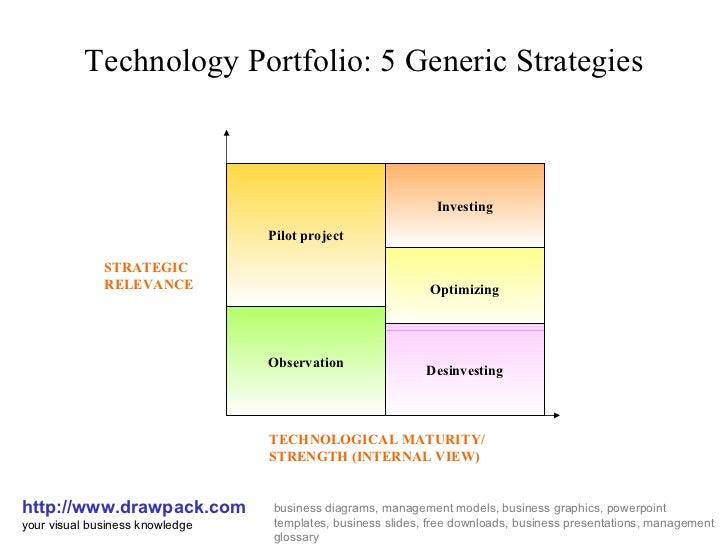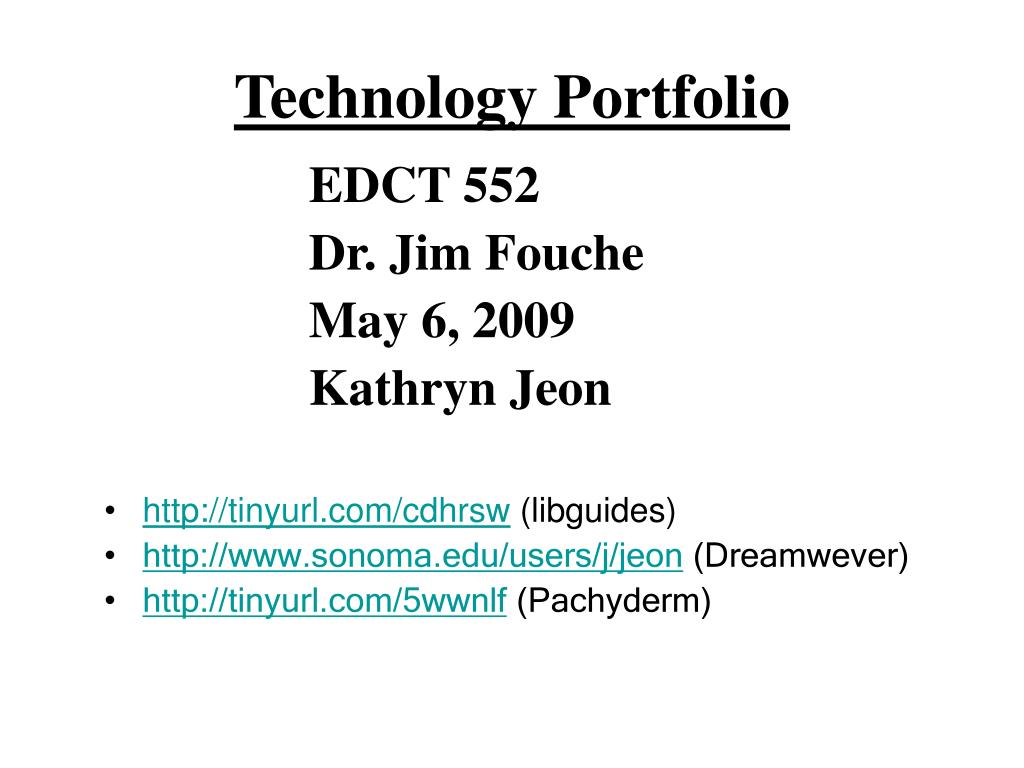Technology Portfolio: A Guide to Showcase Your Skills
A technology portfolio is more than just a resume; it’s a dynamic showcase of your technical expertise and accomplishments. It allows you to present your skills, projects, and experiences in […]

A technology portfolio is more than just a resume; it’s a dynamic showcase of your technical expertise and accomplishments. It allows you to present your skills, projects, and experiences in a compelling and engaging way, effectively demonstrating your value to potential employers or clients.
This comprehensive guide explores the essential aspects of building and maintaining a technology portfolio, from defining its purpose and components to crafting compelling content and presenting it professionally. Whether you’re a seasoned developer, a recent graduate, or someone seeking to transition into a tech-related career, a well-structured technology portfolio can be your key to unlocking new opportunities.
Building a Technology Portfolio

A technology portfolio is a crucial tool for showcasing your skills and experience to potential employers or clients. It allows you to highlight your projects, achievements, and technical expertise in a compelling and organized manner. A well-crafted portfolio can make a significant impact in securing job opportunities or landing freelance gigs.
Creating a Technology Portfolio
A technology portfolio can be created in several ways. You can use online platforms specifically designed for showcasing technical work, or you can build your own website from scratch. Here’s a step-by-step guide to help you get started:
- Choose a Platform: Determine the best platform for your portfolio. Online platforms like GitHub, Behance, or Dribbble provide pre-designed templates and features for showcasing code, design projects, and more. Alternatively, you can build your own website using HTML, CSS, and JavaScript.
- Define Your Target Audience: Identify the type of roles or clients you are targeting. Tailor your portfolio content to their specific needs and interests. For example, if you are aiming for a web development role, highlight your experience with front-end and back-end technologies.
- Showcase Your Best Work: Select your most impressive projects that demonstrate your skills and expertise. Include projects that highlight your ability to solve problems, implement solutions, and achieve desired outcomes.
- Provide Clear and Concise Descriptions: For each project, provide a detailed description of your role, the technologies used, and the key challenges and solutions. Use concise language and avoid technical jargon that may not be understood by everyone.
- Include Relevant Information: Add your contact information, professional experience, education, and any relevant certifications or awards. You can also include a brief bio that highlights your career goals and interests.
- Present a Professional Look: Ensure your portfolio is visually appealing and easy to navigate. Use high-quality images and graphics to enhance the visual appeal. Maintain consistency in the design and layout throughout your portfolio.
- Seek Feedback: Share your portfolio with trusted friends, colleagues, or mentors for feedback. Their insights can help you identify areas for improvement and refine your portfolio before making it public.
Methods for Showcasing Technical Skills
There are various methods for showcasing your technical skills in your portfolio. You can:
- Present Code Samples: Share snippets of code that demonstrate your proficiency in programming languages and frameworks. Use code hosting platforms like GitHub to store and display your code.
- Showcase Project Screenshots: Include screenshots or mockups of your projects to visually represent your work. These can be accompanied by brief descriptions explaining the features and functionality.
- Create Interactive Demonstrations: For web development or design projects, create interactive prototypes or demos to showcase your skills in user interface (UI) and user experience (UX) design.
- Develop Case Studies: Create detailed case studies that describe real-world projects you have worked on. These should include the problem, the solution, the results, and your role in the project.
- Write Blog Posts or Articles: Share your knowledge and expertise by writing blog posts or articles related to your technical skills. This demonstrates your understanding of the field and your ability to communicate complex concepts clearly.
Designing a Visually Appealing Portfolio
A visually appealing portfolio is essential for attracting attention and making a lasting impression. Consider these tips:
- Use a Professional Template: Choose a clean and modern template that reflects your personal brand and the industry you are targeting. Many online portfolio platforms offer pre-designed templates.
- Maintain Consistency in Design: Use consistent colors, fonts, and spacing throughout your portfolio to create a cohesive and professional look.
- Use High-Quality Images: Include high-resolution images and graphics that enhance the visual appeal of your portfolio. Avoid using blurry or low-quality images.
- Optimize for Mobile Devices: Ensure your portfolio is responsive and looks great on all devices, including desktops, laptops, tablets, and smartphones.
- Make it Easy to Navigate: Use clear and concise navigation menus to guide visitors through your portfolio. Include a call-to-action, such as a “Contact Me” button, to encourage engagement.
Content for a Technology Portfolio
Your technology portfolio is your showcase, a curated collection of your skills, achievements, and experiences in the tech world. It’s a dynamic document that tells your story, highlighting your strengths and showcasing your capabilities to potential employers or clients.
Types of Content
A compelling technology portfolio goes beyond simply listing your skills. It presents evidence of your abilities through a variety of content, demonstrating your proficiency and potential.
- Projects: Projects are the heart of your portfolio. They demonstrate your practical application of skills and showcase your ability to solve real-world problems. Include a description of the project, your role, the technologies used, and the outcomes achieved.
- Skills: List your technical skills, including programming languages, frameworks, databases, operating systems, and tools. Quantify your skills by using a rating system like beginner, intermediate, or expert.
- Certifications: Certifications validate your expertise in specific technologies. Include relevant certifications you’ve obtained, along with their issuing organization and date of acquisition.
- Experiences: Include details of your work experience, highlighting projects you’ve worked on, the technologies you used, and the impact you made. For each experience, provide a brief description of your responsibilities and achievements.
Examples of Compelling Content, Technology portfolio
Here are some examples of compelling and informative content for technology portfolios:
- Project: “Developed a web application using ReactJS and Node.js to streamline customer onboarding process. The application reduced onboarding time by 25% and improved customer satisfaction scores by 10%.”
- Skill: “Expert in Python programming with 5+ years of experience developing backend applications for e-commerce platforms.”
- Certification: “Certified AWS Solutions Architect – Associate, demonstrating expertise in designing and deploying cloud-based solutions on Amazon Web Services.”
- Experience: “Led a team of software engineers in developing a mobile application for a major financial institution. The application achieved a 4.5-star rating on the app store and increased user engagement by 30%.”
Technology Portfolio Presentation
Your technology portfolio is a reflection of your skills and experience. It’s a vital tool for showcasing your capabilities to potential employers or clients. While a well-structured portfolio is essential, a compelling presentation can make all the difference.
Methods for Presenting a Technology Portfolio
The method you choose for presenting your technology portfolio will depend on your target audience and the nature of your work. Here are some popular methods:
- Online Portfolio Website: A dedicated website is the most common and professional way to present your portfolio. It allows you to showcase your projects, skills, and experience in a visually appealing and organized manner. You can use platforms like WordPress, Wix, or Squarespace to create a custom website.
- PDF Document: A PDF document is a versatile option that can be easily shared and viewed on any device. It’s ideal for presenting your portfolio in a formal setting, such as job applications or client proposals.
- GitHub Repository: For software developers, GitHub is a popular platform to host code and projects. You can create a dedicated repository for your portfolio, showcasing your coding skills and contributions.
- Interactive Presentation: For more engaging presentations, consider using tools like Prezi or Slideshare. These platforms allow you to create interactive presentations with multimedia elements, making your portfolio more dynamic and memorable.
Importance of a Clear and Concise Presentation
A clear and concise presentation is crucial for conveying your message effectively. It ensures that your portfolio is easy to navigate, understand, and remember.
- Easy Navigation: Organize your portfolio logically, using clear headings, subheadings, and visual cues to guide the viewer.
- Concise Content: Use concise language and avoid jargon. Focus on highlighting the key takeaways and achievements from your projects.
- Visual Appeal: Use high-quality images, videos, and graphics to make your portfolio visually appealing and engaging.
Tips for Showcasing a Technology Portfolio Professionally
Here are some tips to help you showcase your technology portfolio in a professional manner:
- Tailor Your Portfolio: Customize your portfolio to suit the specific requirements of each opportunity.
- Highlight Relevant Skills: Focus on skills and experience that are most relevant to your target audience.
- Showcase Your Best Work: Include projects that demonstrate your skills and abilities effectively.
- Provide Detailed Information: Include detailed descriptions of your projects, including the technologies used, challenges faced, and solutions implemented.
- Proofread Carefully: Ensure that your portfolio is free of errors and typos.
- Get Feedback: Seek feedback from trusted colleagues or mentors to improve your portfolio’s presentation.
Last Recap: Technology Portfolio

In the ever-evolving landscape of technology, a technology portfolio is an invaluable asset. It serves as a dynamic platform to showcase your expertise, attract opportunities, and propel your career forward. By meticulously curating your portfolio, you’ll not only present your skills effectively but also demonstrate your commitment to continuous learning and professional growth.
A technology portfolio showcases your skills and experience, demonstrating your ability to navigate the ever-evolving tech landscape. For example, if you’re adept at t technology , showcasing projects that leverage this expertise can highlight your capabilities and attract potential employers or clients.
A well-structured portfolio can be your key to unlocking exciting opportunities in the dynamic world of technology.








